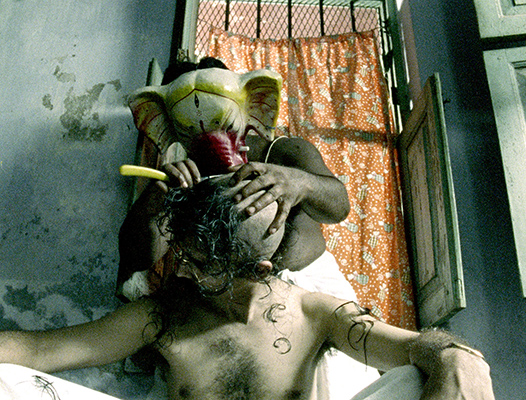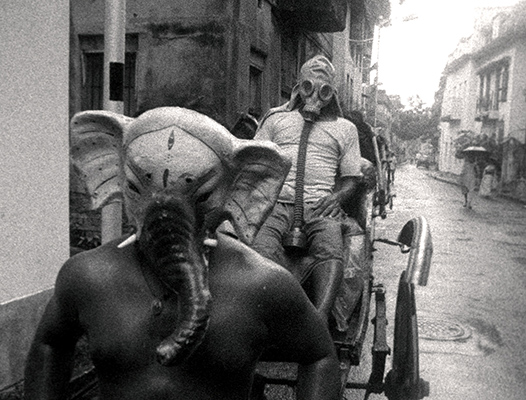In the first scene of Vakrantunda Swaha, a young man dips a Ganesha idol in water on the last day of the Ganapati Festival. During this festival, a Ganesha symbol is worshipped for ten days, and then on the eleventh day the statue is taken through the streets in a procession to be immersed in a river or the sea, symbolizing a ritual send off of the Lord in his journey towards his abode in Mount Kailash. As he leaves this world, he takes with him the misfortunes of all men. The scene was shot in 1997, and the young man in the footage is the artist Girish Dahiwale. The scene was supposed to be part of a collective film manifesto that Ashish Avikunthak and three other artists planned to shoot, but they never finished the project. In 1998, Girish Dahiwale committed suicide.
The film became a requiem for Avikunthak’s deceased friend. It stages the rite of passage that allowed the dead artist to enter into the other world. The film develops as a dreamlike sequence of scenes that confuse good and evil, fiction and reality. Vakrantunda literally means “twisted trunk,” one of eight forms of Ganesha that prevail over human weaknesses and demons. Swaha is the name of a deity associated with sacrifice. When sacrifices are made, the name “Swaha,” which literally means “self-spoken” or “spoken by me,” is chanted. The title thus frames the death of the young man as a sacrifice which, like Ganesha’s departure, frees man from bad faith. One recurring theme is the tonsure, the ritual shaving of one’s head. This Hindu ritual is traditionally carried out by the oldest son after the loss of a family member. Whereas it normally happens only once when someone dies, in this film the tonsure is performed three times, and on Ashish Avikunthak himself. By showing Avikunthak’s own mourning, the film—which took him twelve years to finish—becomes a cathartic document.
Ashish Avikunthak, born 1972 in India, lives and works in Calcutta


